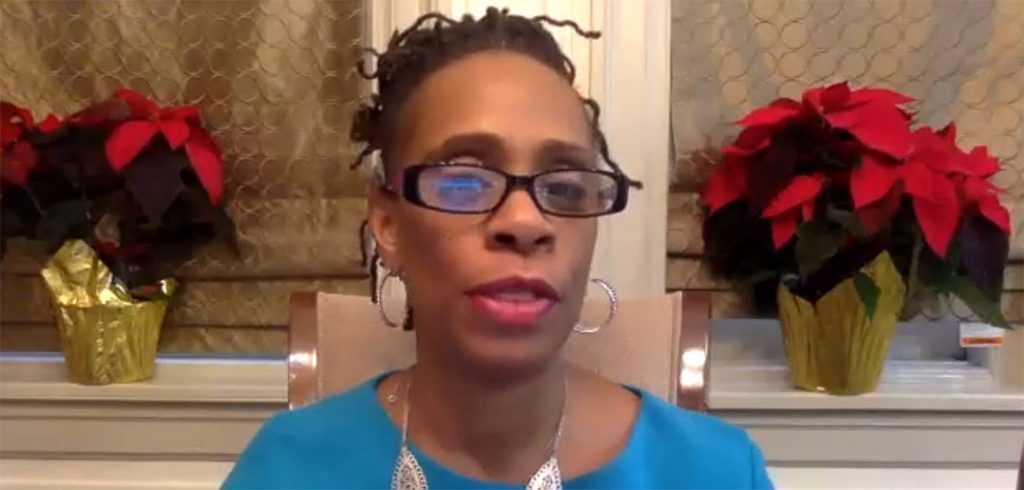When the City of New York went into a COVID-driven lockdown in March 2020, one of the systems that was disrupted was the child welfare system, which is overseen by the Administration for Children’s Services (ACS).
On Dec. 8, a group of nearly 175 parents, community activists, lawyers, academics, government employees, and nonprofit leaders came together for the first of four Zoom meetings to discuss what happened and what can be done to reform the system.
The group effort, titled “Narrowing the Front Door to NYC’s Child Welfare System,” is a part of the Graduate School of Social Service (GSS) James R. Dumpson Children and Families Summit, and is sponsored by the Redlich Horwitz Foundation.
Harnessing Data from the Pandemic Months
Anne Williams-Isom, FCLC ’86, who was appointed the James R. Dumpson Chair in Child Welfare Studies at GSS in 2020, said the group is geared toward taking advantage of several unique opportunities. The first is that the pandemic served as a real-life experiment on what would happen if the child welfare system was effectively put on pause for 18 months. The second is the fact that New York City will have both a new mayor and a new governor next year who might be open to changes based on new information gathered over the last year and a half.
“We don’t have to reimagine what could happen [if we make changes]. We actually have some data,” said Williams-Isom, a member of the University’s President’s Council, who was appointed New York City’s deputy mayor for health and human services in December.
“So, what does this suggest in terms of the practices and the policies that we want to have in child welfare, moving forward?”
Williams-Isom, who came to Fordham after serving as CEO of the anti-poverty organization Harlem Children’s Zone, said she’d been thinking about how to fix the system, which disproportionally affects families of limited means and those who are Black and Latinx, since the late ’90s, when she first started working for ACS. She served as deputy commissioner for the agency from 2006 to 2009.
“There are people who say you have to blow up the whole system, because it’s terrible and based on racist principles, and we can’t fix it,” she said.
“Then there are people who are reformers like me. I call myself ‘abolition curious.’ I’m kind of beginning to see it’s not as easy to change systems and take out the years and years of racism in them.”
Producing Reports
After each of the meetings, discussions are being summarized in working papers, and the final result will be a report that will be presented to state and city authorities.
The meeting on Dec. 8 was organized so that all participants’ voices would be heard. Before heading into break-out rooms of four for 20 minute-long discussions, participants listened to Anna Arons, an acting assistant professor of lawyering at NYU School of Law, present the findings of her forthcoming paper An Unintended Abolition: Family Regulation During the COVID-19 Crisis, (Columbia Journal of Race and Law).
Before the pandemic, Arons said, 65,000 reports were submitted to ACS annually, mostly from mandated reporters such as schoolteachers and administrators. Eighty-five percent of those reports were for neglect, not the kind of abuse that receives news headlines when it goes undetected. Just as notable, she said, is the fact that 65% of reports were judged to be unsubstantiated.
“It bears noting that, even if these investigations don’t end up in family court, they are incredibly invasive, and even if they don’t result in a family separation, they involve an agent of the state who’s entering people’s homes, often unannounced in the middle of the night, demanding to see the child’s nude body, and demanding to look in every cabinet,” she said.
“It’s just a terrifying experience for any person to go through, even if that’s the end of it.”
It’s not a system that equally affects all New Yorkers either, she said, as 90% of those reported are Black and Latino, and live predominantly in lower-income neighborhoods.
In March 2020, however, schools shifted to remote learning, ACS outreach workers conducted visits remotely—and thus scheduled them in advance, and family court was instructed to only take up cases on an emergency basis. As a result, the number of reports, investigations, and children taken from their families was cut in half.
Even now, with the pandemic receding and schools reopened, there have been no indicators that abuse that took place over the last 18 months was missed, or that it is being detected in higher levels now, she said.
“We have this period when we can now see that children are staying safe not because of the family regulation system, but in its absence,” said Arons, who noted that in June, ACS commissioner David Hansell testified to the same effect.
It’s no coincidence that this period was also one in which more government assistance was distributed to families, via stimulus checks, unemployment benefits, and child tax credit, with fewer strings than essentially any other period since the New Deal, she said.
“How do we solve child neglect and keep children safe in this country? We give families money so they can keep their own families safe, and we don’t require the government to come in and police them and say ‘This is how you need to raise your children,’” she said.
The next discussion, which will take place on January 19, will focus on how New York City’s child welfare system is funded. The last two discussions will focus on what help should look like and a discussion of recommendations and collective action.

